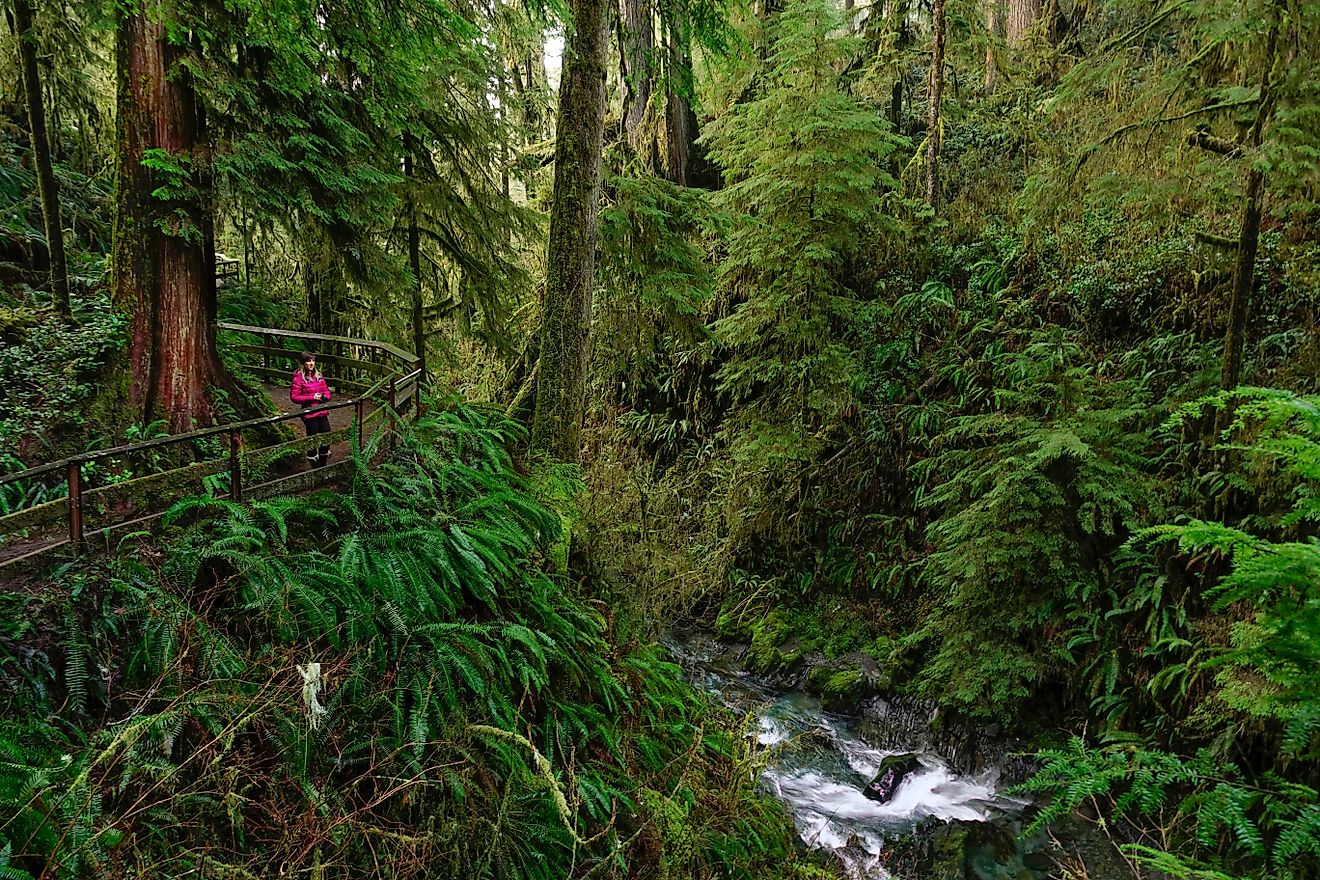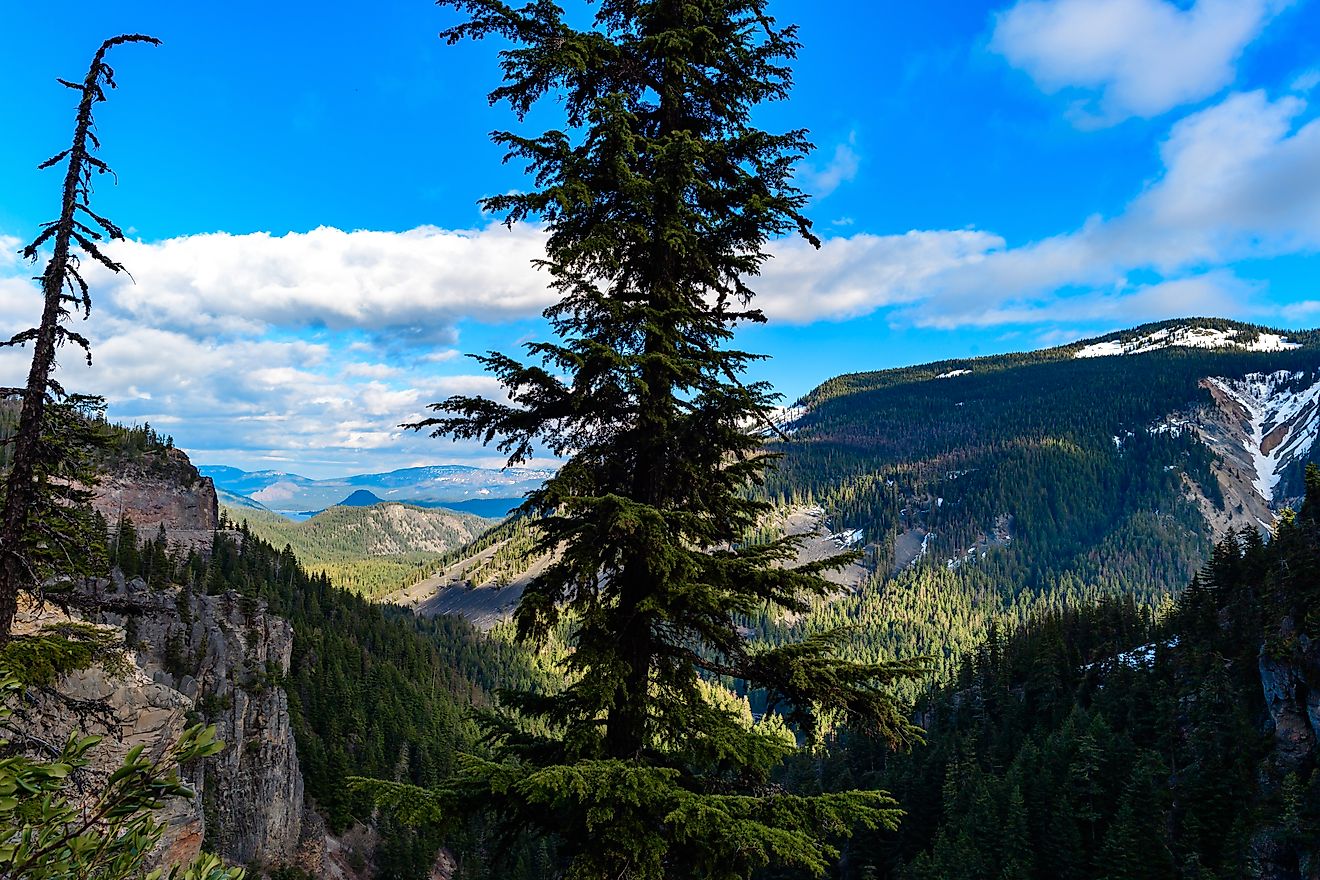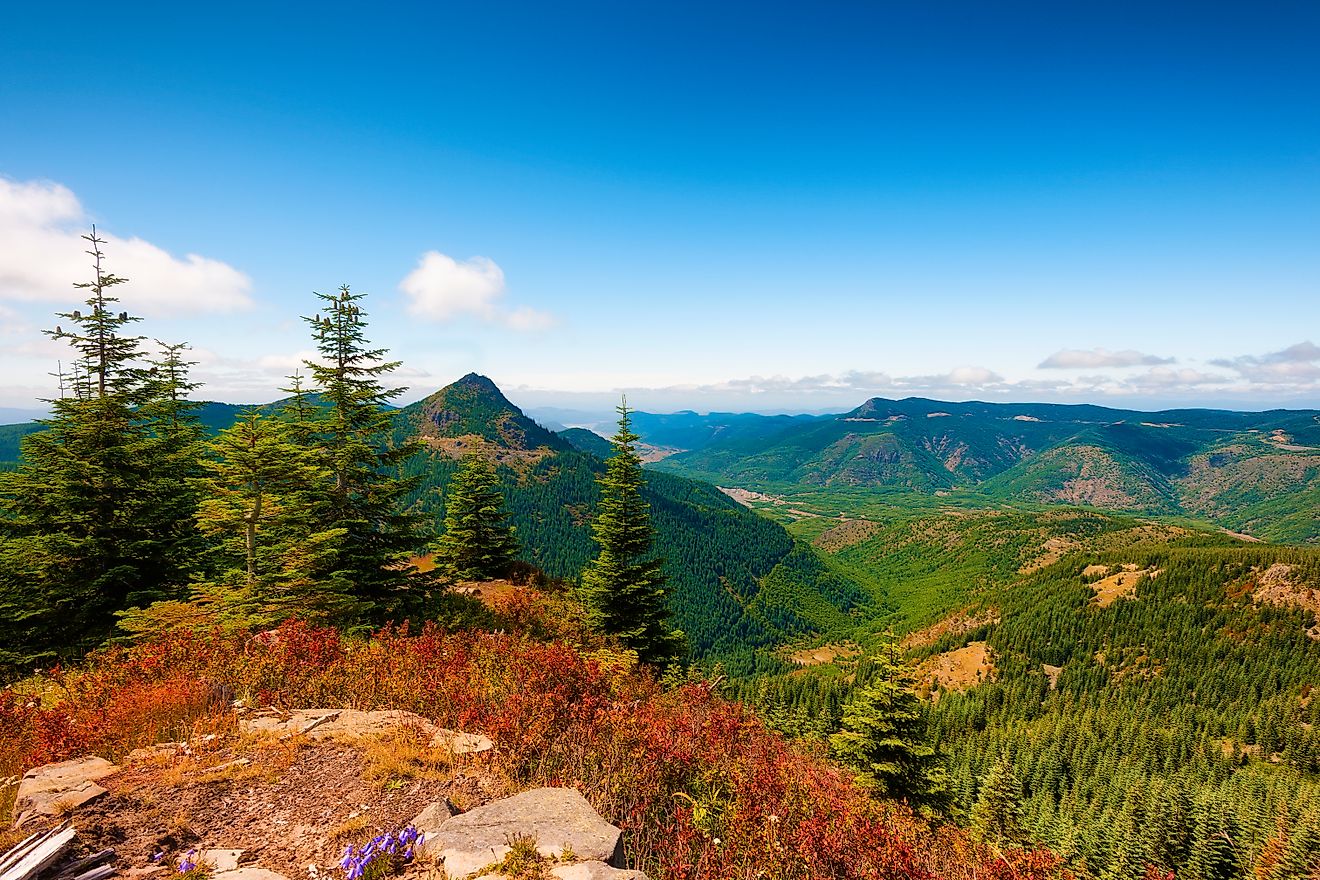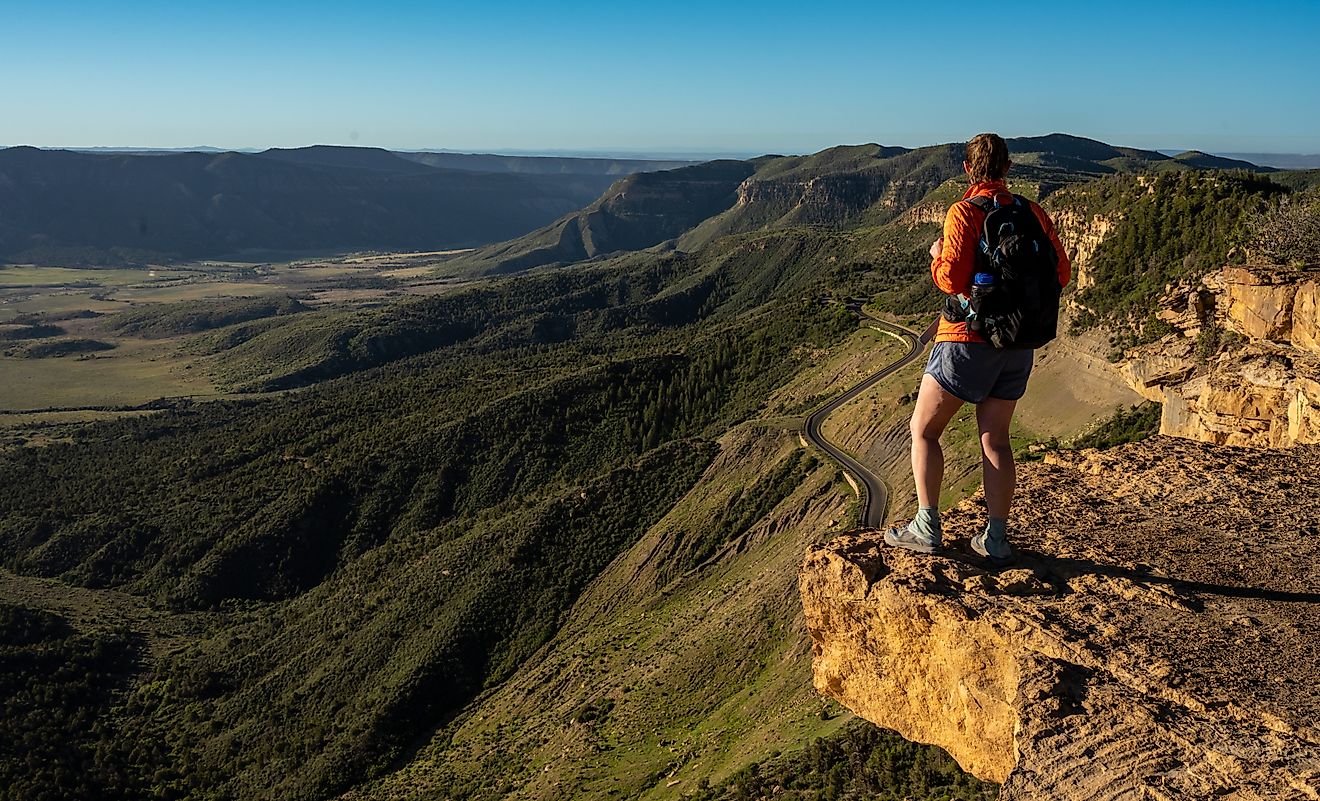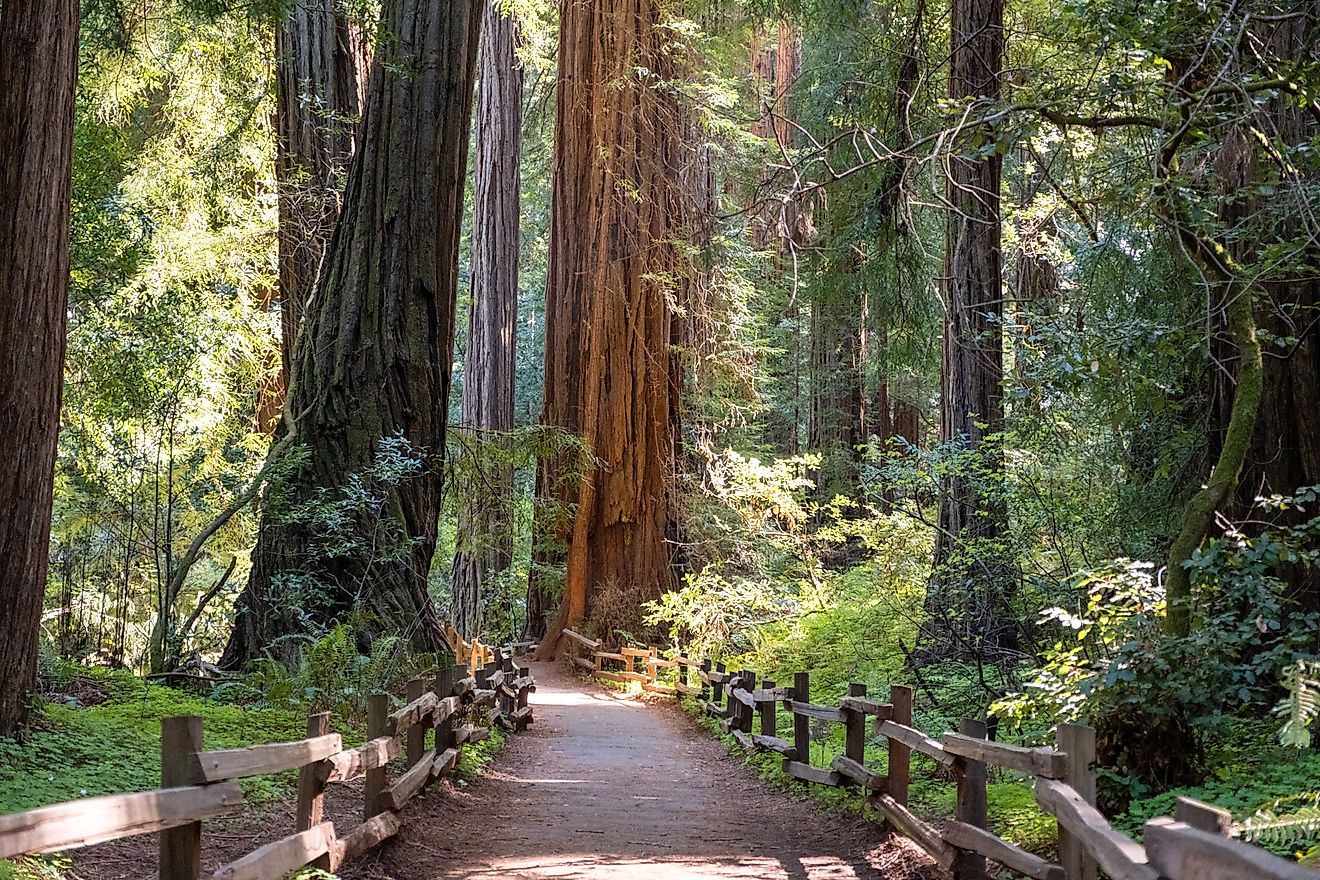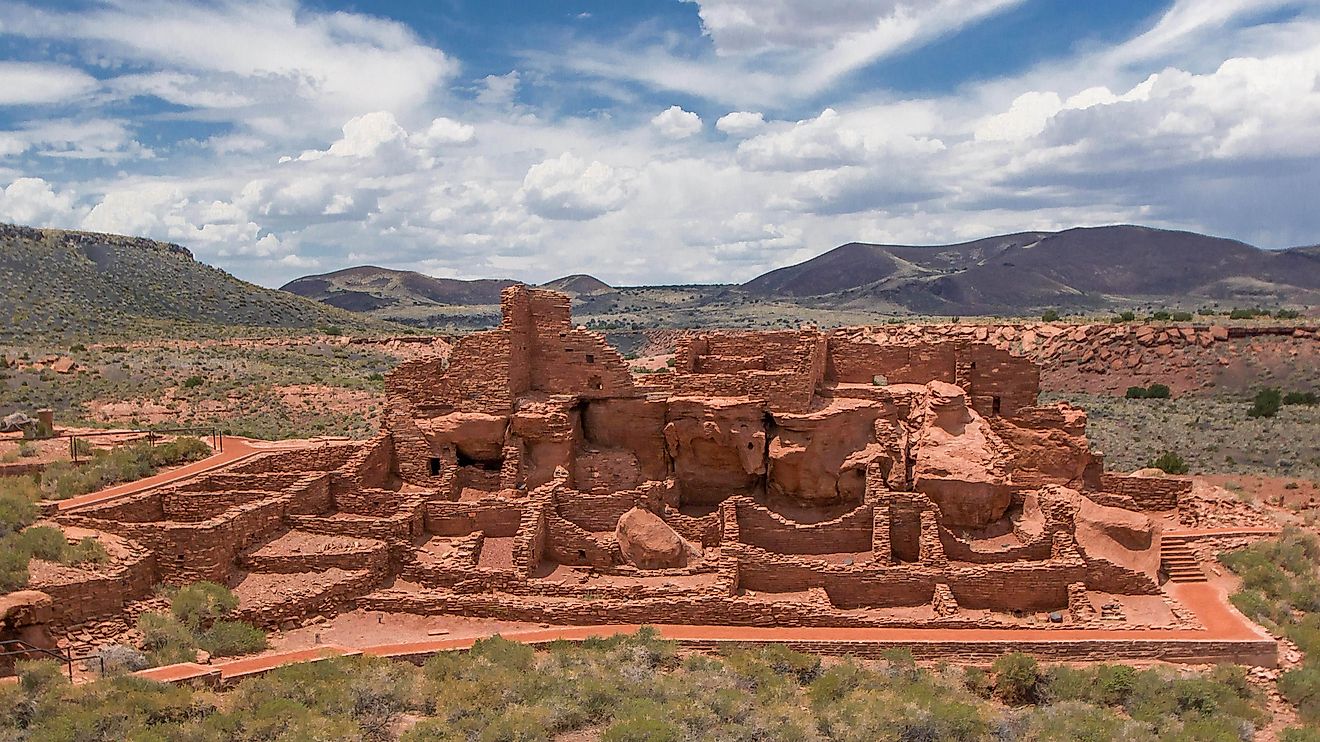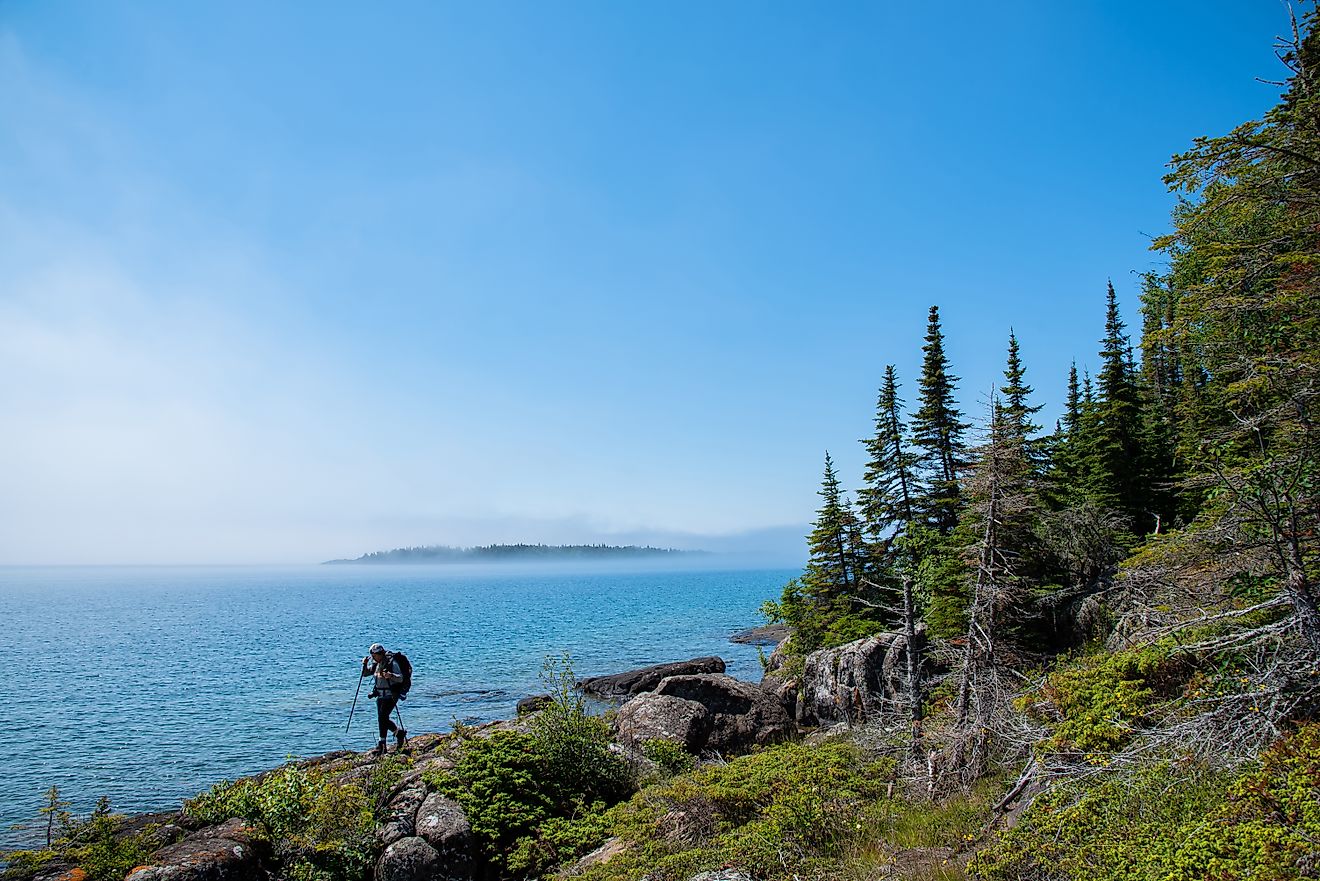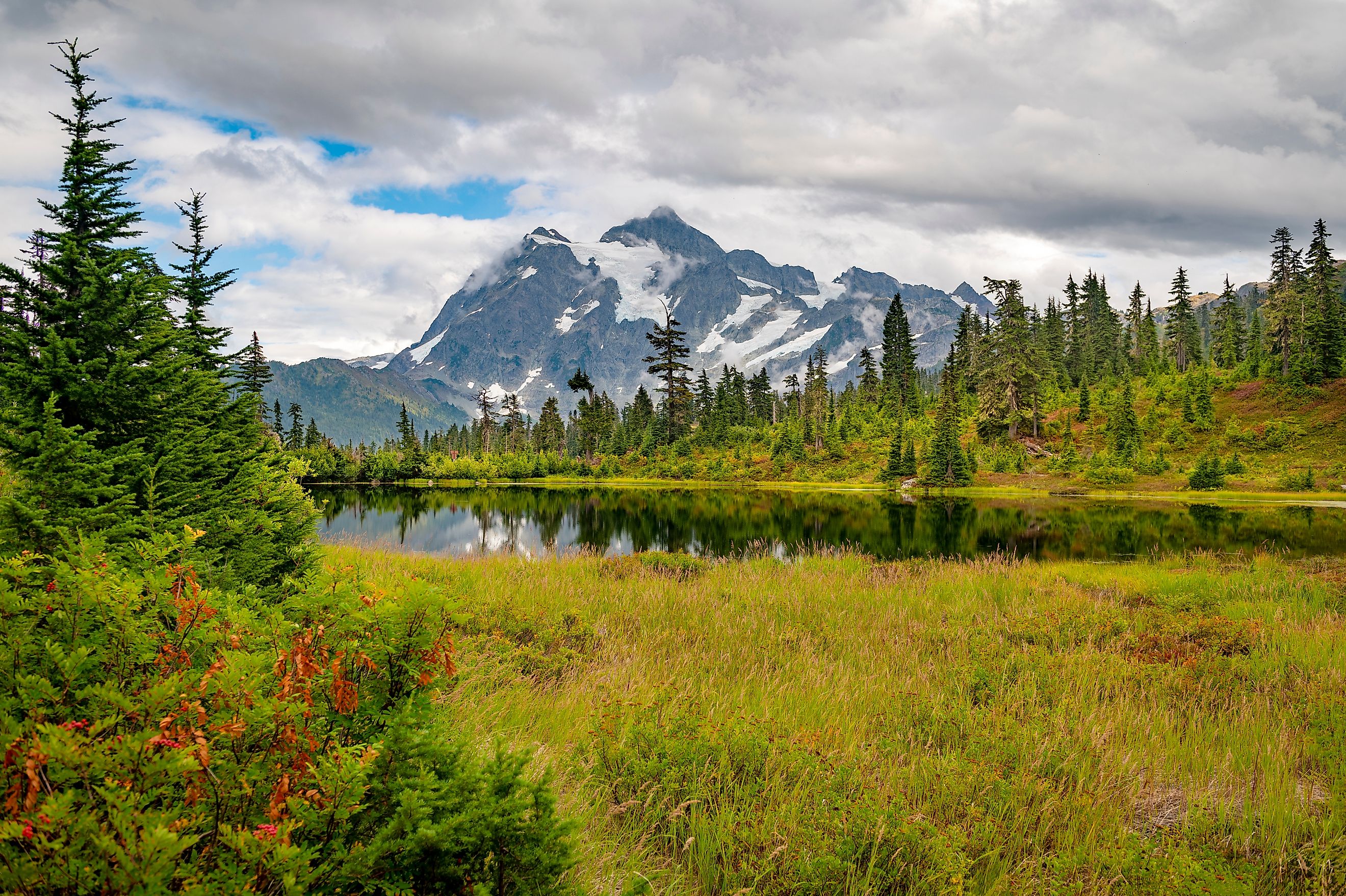
Mount Baker-Snoqualmie National Forest
Mount Baker-Snoqualmie National Forest combines raw wilderness with surprisingly accessible adventure. Extending over 140 miles along the Cascade Mountains’ western slopes, the forest stretches from the Canadian border to the northern edge of Mount Rainier National Park. Its closeness to Seattle and Vancouver has made it one of the most frequented national forests in the country, drawing interest for both day trips and deeper backcountry excursions.
Towering peaks, sprawling glaciers, ancient old-growth forests, and sparkling alpine lakes define the landscape. Beyond its natural beauty, the forest serves as a living record of human interaction, recreation, and conservation efforts that have shaped this iconic Pacific Northwest wilderness for more than a century.
A History Written in Timber and Trails
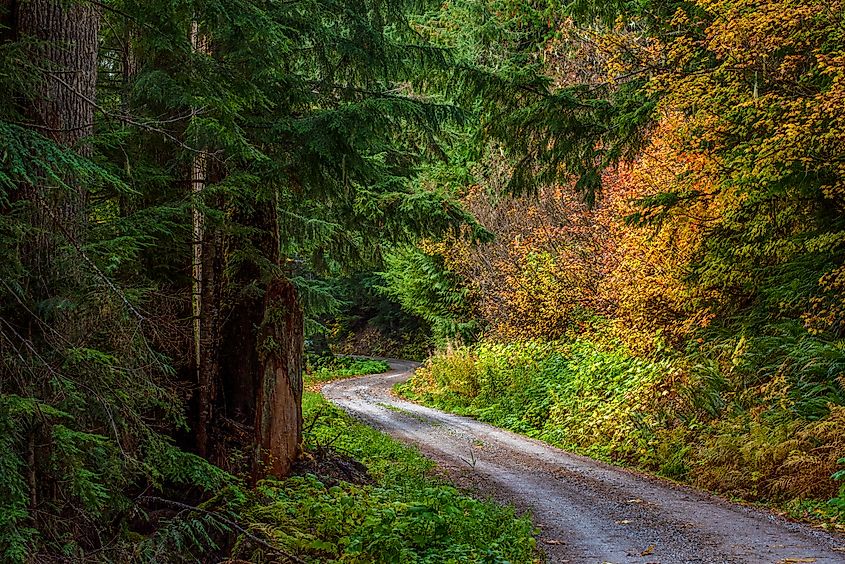
The Mount Baker National Forest was originally designated as the Washington Forest Reserve on February 22, 1897, encompassing over 3.5 million acres. It became an official national forest in 1907 and was renamed Mount Baker National Forest in 1924. Snoqualmie National Forest emerged in 1908, and the two were combined administratively in 1974.
The forest has also played a role in film history. The 1935 adaptation of "The Call of the Wild," starring Clark Gable and Loretta Young, was filmed on location in Mount Baker National Forest. Filmmakers sought the remote setting to avoid interruptions, capturing the wild terrain for audiences nationwide. Paramount Pictures later filmed "The Barrier" (1937) at Mount Baker Lodge, cementing the forest’s cinematic legacy.
Frozen Heights and Mountain Vistas
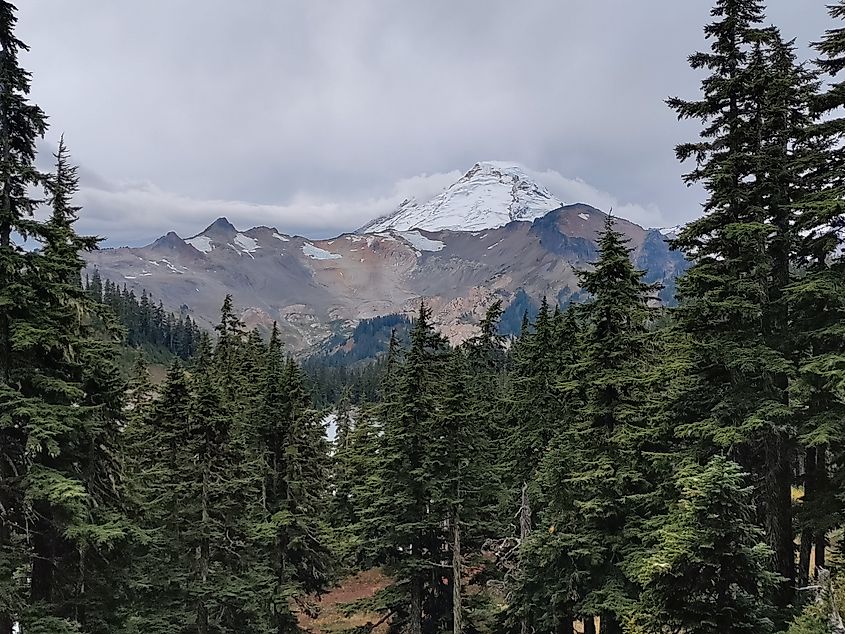
Mount Baker-Snoqualmie National Forest is defined by its towering mountains and expansive glaciers. Peaks rise from 5,000 to 6,000 feet in the south to 7,000 to 8,000 feet in the north. Two massive volcanoes dominate the skyline: Mount Baker and Glacier Peak. These summits are visible for miles, offering a dramatic backdrop to lakes, rivers, and dense forests below.
Glaciers are abundant here, making the forest home to more snowfields and ice than any other national forest outside Alaska. Historically, there were nearly 300 glaciers, though retreat caused by climate change has reduced the number to fewer than 287. Prominent glaciers include:
-
Mount Baker
-
Roosevelt
-
Mazama
-
Park
-
Boulder
-
Easton
-
Deming
-
Coleman
-
Sentinel Peak
-
South Cascade Glacier
-
Glacier Peak
-
Suiattle
-
Honeycomb
-
White Chuck
Glacial retreat has altered water flows, affecting river ecosystems and salmon habitats, highlighting the forest’s delicate balance between wilderness and environmental change.
Waters That Shape the Wild
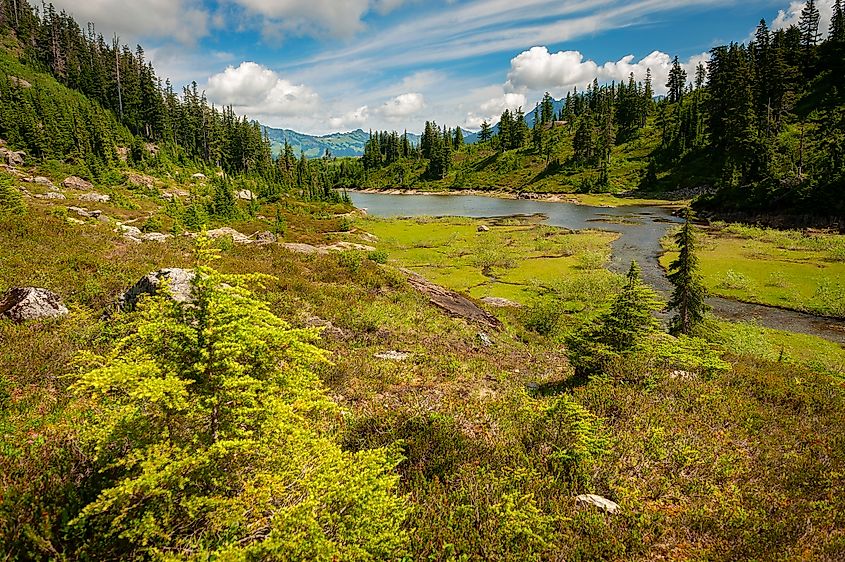
More than 800 lakes scatter the forest, mostly in alpine regions. Baker Lake, a 10-mile-long reservoir near Mount Baker, supplies hydroelectric power and provides ample recreation opportunities. Rivers such as the Skagit, Sauk, Cascade, and Suiattle support wildlife and are designated part of the Skagit Wild and Scenic River System. This system shelters one of the largest winter populations of bald eagles in the country, along with countless fish and mammal species.
The forest spans multiple ecological zones, including:
-
Western Hemlock Ecoregion
-
Silver Fir Ecoregion
-
Subalpine Mountain Hemlock Ecoregion
-
Alpine Ecoregion
These zones support diverse flora and fauna, from dense old-growth forests to alpine meadows, providing habitat for deer, black bears, bobcats, and countless bird species. Fisheries and wildlife programs ensure that native species thrive alongside human recreation.
Play Among the Pines
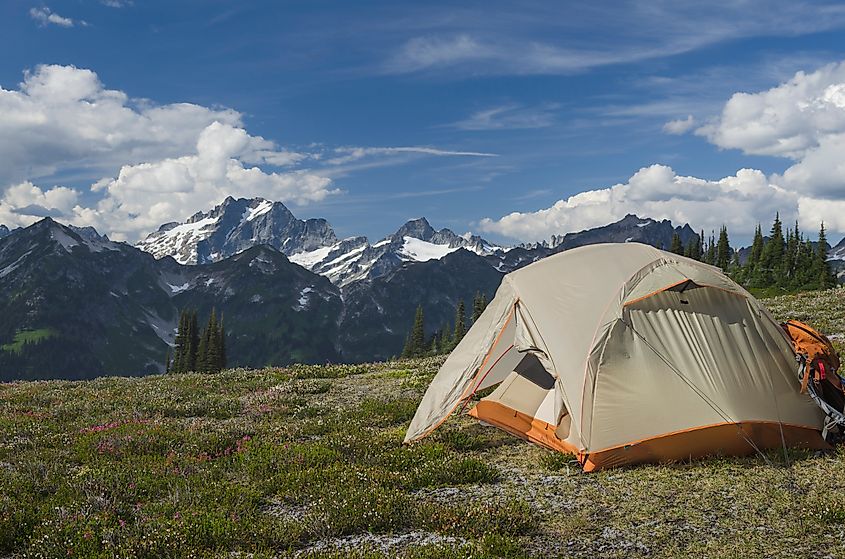
Mount Baker-Snoqualmie National Forest offers more than 50 campgrounds, picnic areas, and scenic viewpoints. Skiing is prominent, with seven downhill ski areas including Crystal Mountain, Stevens Pass, and Mount Baker itself. Winter sports extend to snowshoeing and snowmobiling, while rivers offer rafting and fishing. Hiking and mountaineering are a draw year-round, with more than 1,500 miles of trails, including stretches of the Pacific Crest National Scenic Trail.
The forest’s alpine lakes and rivers provide water-based recreation, while summer months reward with wildflower displays and birdwatching. The area’s rich cultural history is reflected in historic ranger stations, old-growth logging areas, and preserved mining sites.
Forests Under Protection
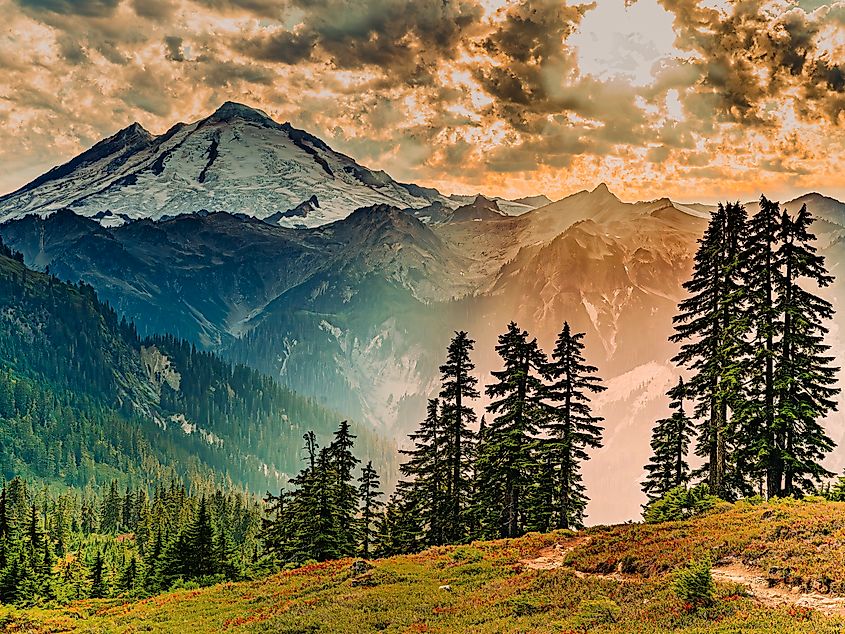
Nearly half of Mount Baker-Snoqualmie National Forest is protected as wilderness. Eleven areas preserve pristine ecosystems and old-growth forests:
-
Alpine Lakes Wilderness
-
Boulder River Wilderness
-
Clearwater Wilderness
-
Glacier Peak Wilderness
-
Henry M. Jackson Wilderness
-
Mount Baker Wilderness
-
Noisy-Diobsud Wilderness
-
Norse Peak Wilderness
-
Pasayten Wilderness
-
Wild Sky Wilderness
These areas provide refuge for wildlife, clean water sources, and opportunities for solitude and backcountry exploration. The forest’s old-growth areas cover over 643,000 acres, emphasizing the importance of protecting ecosystems that have remained intact for centuries.
The forest is managed in partnership with federally recognized tribes, environmental groups, and recreation organizations, balancing conservation, recreation, and resource management. Fisheries, soil health, and sustainable timber management remain active programs, ensuring the forest continues to thrive.
Gateway to the Cascades
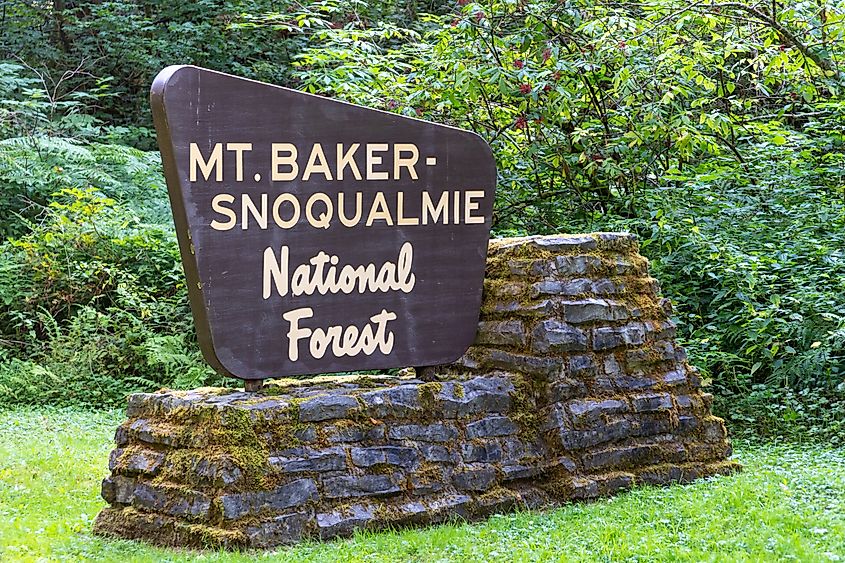
The forest’s northern sections are within easy reach of the Seattle metropolitan area, with 62 percent of Washington’s population within a 70-mile drive. Vancouver, Canada, lies within proximity to the northern reaches, extending the forest’s appeal across borders. Despite high visitation, the vast size and diverse terrain ensure that solitude remains possible for those venturing deeper into wilderness areas.
Ranger stations are strategically placed across the forest: Glacier and Sedro-Woolley in the north, Darrington and Verlot in the Darrington District, Skykomish in the Skykomish District, and North Bend and Enumclaw in the Snoqualmie District. These stations provide resources, permits, and guidance, maintaining a balance between public access and preservation.
Landscapes Worth the Lens
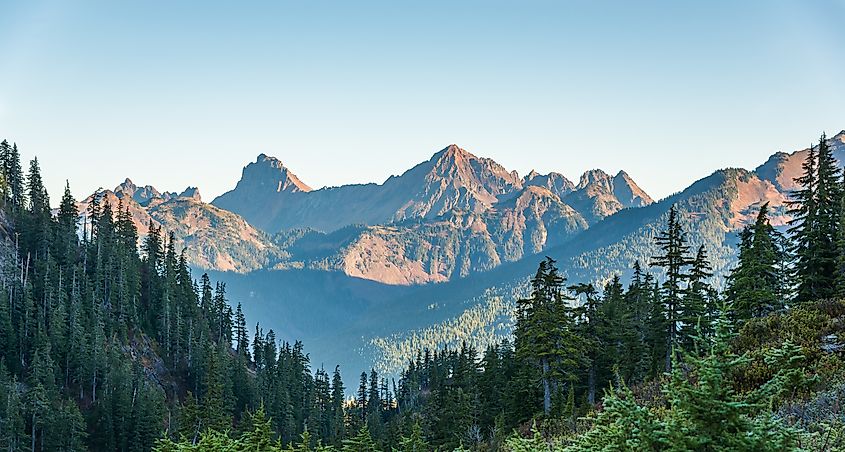
-
Mount Baker: The glacier-capped volcano dominates the northern skyline and serves as a hub for climbing and winter sports.
-
Glacier Peak: Remote and less accessible, Glacier Peak offers rugged terrain for advanced mountaineering.
-
Alpine Lakes: Pristine alpine lakes offer fishing, boating, and picturesque reflections of surrounding peaks.
-
Old-Growth Forests: Towering western hemlock and silver fir create dense canopies, some trees centuries old.
-
Skagit River: A wild and scenic river system that supports eagles, salmon, and trout.
The forest’s diversity ensures that each section offers unique experiences, from river valleys and waterfalls to snowfields and alpine ridges.
The Lasting Wild of Washington
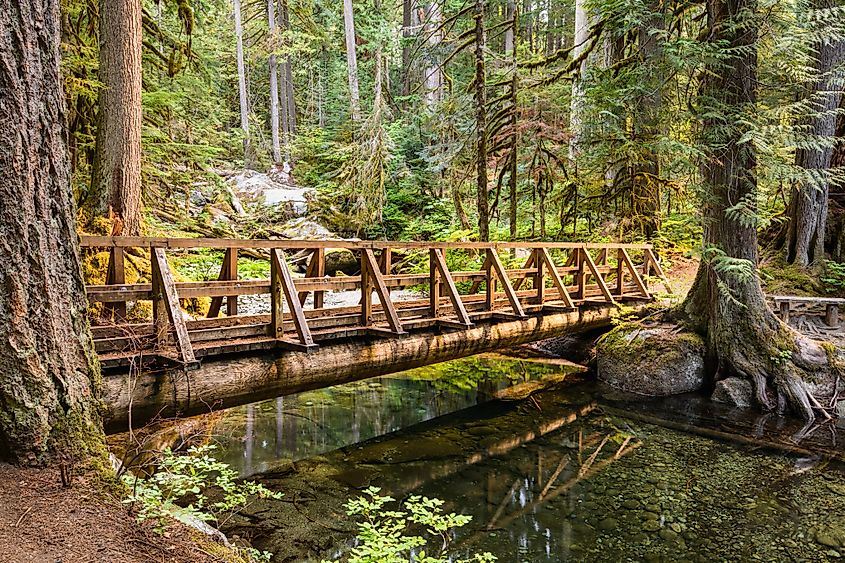
Mount Baker-Snoqualmie National Forest balances adventure and accessibility in a way few landscapes can. Towering volcanoes pierce the sky, glaciers slowly carve the valleys, alpine lakes shimmer in sunlight, and old-growth forests stretch for miles. Wildlife roams freely through protected wilderness areas, while trails, rivers, and ski slopes offer countless ways to engage with the land.
Just a short drive from Seattle and Vancouver, the forest provides a striking contrast to city life. Beyond recreation, it tells a story of conservation, culture, and the Pacific Northwest’s rugged beauty. Each peak, lake, and forested corridor offers a glimpse into a world where nature reigns and history lingers in the shadows of the trees.
Key Facts at a Glance
| Feature | Details |
|---|---|
| Total Area | 1,724,229 acres |
| Length | 140 miles |
| Counties | Snohomish, Whatcom, Skagit, King, Pierce, Kittitas |
| Peaks | Mount Baker (10,781 ft), Glacier Peak (10,541 ft) |
| Glaciers | 287+ major glaciers |
| Lakes | 800+, including Baker Lake |
| Ranger Districts | Mount Baker, Darrington, Skykomish, Snoqualmie |
| Recreation | Hiking, skiing, fishing, rafting, birdwatching |
| Wilderness Areas | 11, covering 827,101 acres |
| Established | 1897 (Washington Forest Reserve) |
| National Forest Merge | 1974 (Mount Baker + Snoqualmie) |
